by Lara Flecker, Senior Textile Conservation Display Specialist, and Rachael Lee, Textile Conservation Display Specialist
The costume mounting team were recently tasked with recreating the fun, free-spirited essence of the fashion and stage clothing of the late 1960s and early ’70s for the V&A 2016 exhibition ‘You Say You Want a Revolution? Records and Rebels 1966-1970’. Featuring items from flamboyant menswear worn by Mick Jagger to the youthful street style cultivated by British designers such as Mary Quant, it was important that the presentation of garments did justice to their iconic status. It was agreed with the exhibition designers from Nissen Richards Studio that standard mounting methods would not be sufficient to interpret the revolutionary themes of the exhibition, which include Swinging London and Woodstock festival. Something new and experimental would be required to animate the display figures.
Nissen Richard’s design vision was to create a monochrome collage effect for all visible parts of the mannequin such as feet, hands and heads. These were not intended to look overly realistic but instead have a flat printed treatment that would complement the psychedelic aesthetic of the exhibition. The costume mounting team now faced the challenge of how to combine two-dimensional photographed limbs with a three-dimensional costume. This was by no means straightforward and mounting techniques developed for previous exhibitions such as Hollywood Costume were a valuable resource.
As the majority of garments selected for display from the V&A’s collection were in good condition there was an opportunity to introduce more dynamic poses that would capture the character of the era. With this in mind a photoshoot was conducted using live models to provide a suitable stance for each outfit (Figure 1).
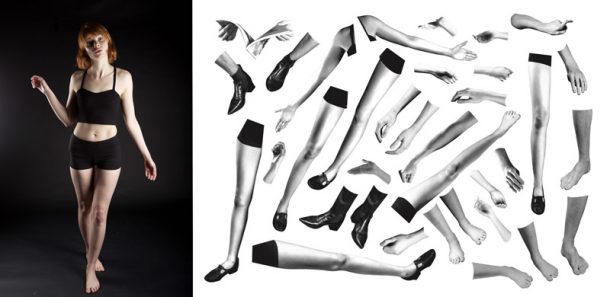
As there were over 20 outfits that required individual poses it was necessary to create a mounting solution that could be easily adapted to support each object. Essential to the process was the development of a prototype figure to establish whether the design vision was feasible (Figure 2). This provided an opportunity to discuss techniques, iron out problems as well as giving everyone involved the courage to proceed. At this early stage it was clear that with some fine-tuning and modification for each pose, the prototype could evolve into an exciting new mounting system.
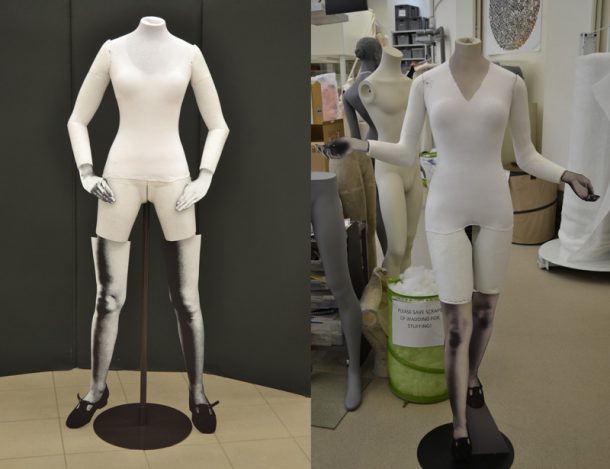
Inexpensive papier-mâché dress stands were the ideal foundation on which to build and a suitably sized torso was selected for each outfit and customized with padding. With the body of the garment supported in this way, work could begin on the more complex limbs which were broken down into two components:
- the three-dimensional limbs that would provide additional support and be hidden underneath garments
- the flat photographed limbs that would be visible below the hems and cuffs of garments
Both of these elements had to be made from scratch. Whilst the designers began testing different black and white printing techniques onto Forex (5mm PVC rigid foam sheet commonly used as a printing substrate) the costume mounting team worked in collaboration with lead V&A technician Stephen Warrington on the three-dimensional limbs. These were made out of Fosshape a non-woven, low-melt polyester fabric that hardens when heat activated. This versatile material has recently facilitated many new developments in costume mounting at the V&A and was ideal for use due to its free moulding abilities. To make the arms and legs, Fosshape was wrapped around existing fibreglass mannequin limbs, stitched roughly together and steamed with a hot iron or commercial steamer (Figure 3). This causes the material to shrink and harden around the mould, creating a realistic shape. Once removed from the mould, the limbs were cut, adapted and re-stitched into different positions, mimicking the poses from the photo shoot.
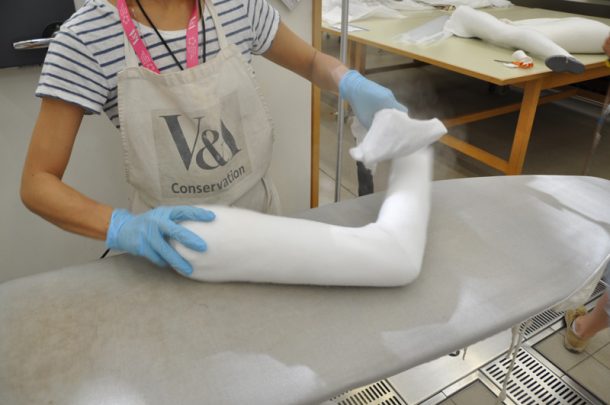
The next stage was to introduce the photographed limbs. Unfortunately, inconsistencies during the photoshoot meant that the flat limbs had to be individually scaled to fit each costume so that the transition from 2D to 3D appeared seamless. This meticulous work was undertaken by graphic designer Amy Haigh who worked on site in collaboration with the mounting team.
With all the body parts now in proportion the different elements could be fixed together. The bottom of each Fosshape limb was capped off with a plug of 18mm thick PALIGHT (a very lightweight PVC rigid foam board), to which the flat limbs were attached. Additional fixings were inserted at the top of the arms and shoulders so that they could be easily removed during dressing.
With the printed limbs now attached it was important that any remaining visible part of the mount would tie in with the tone of the monochrome hands and feet. The necklines of the torsos were covered in a neutral fabric and sprayed with layers of acrylic paint to match the photographic finish of the flat limbs. Finally, to complete the mount a flat circular disk was attached to the neck of each figure onto which a graphic was printed or a moving image could be projected. Learning from mistakes made in Hollywood Costume, the brightness and animation of these were carefully gauged to minimize distraction from the objects.
The decision to adapt and customise commercial dress stands in combination with Fosshape, to simulate specific poses, successfully brought a sense of animation and personality to each outfit (Figure 4). This new mounting system was achieved without the use of high-tech or expensive materials, although the production of each mount was time-consuming. The final effect in some ways did not fully realise Nissen Richards’s initial concept of creating a quirky cut and paste collage mannequin as the flat limbs looked more realistic than first anticipated. However the mix of photographed limbs matched with three-dimensional supportive Fosshape did create something entirely new and opens up a world of possibility for the future.
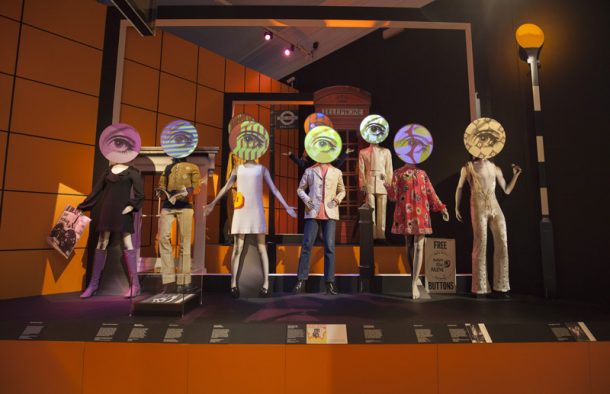
Acknowledgements
We are grateful to Pippa Nissen, Amy Haigh and Candy Wall from the Nissen Richards Studio for their collaborative work on this project. Special thanks go to Lead Technician Stephen Warrington and Exhibitions Manager Robyn Earl.
‘You Say You Want a Revolution? Records and Rebels 1966-1970’ in partnership with Levi’s®. Sound experience by Sennheiser. With additional support from Grow Annenberg Foundation, Fenwick and Sassoon. On now until 26th February 2017.
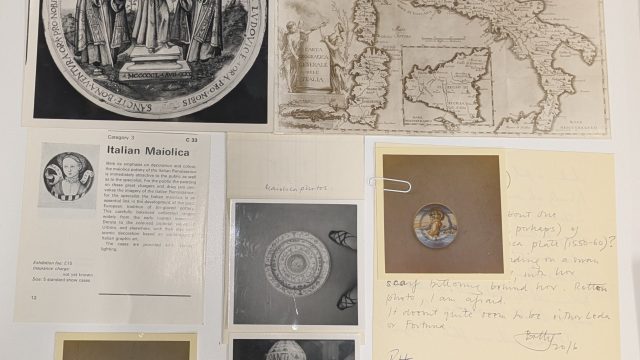
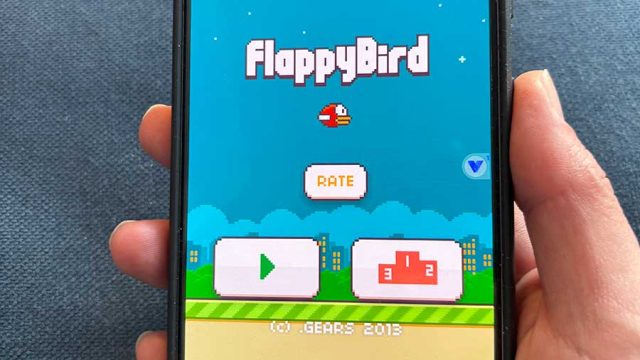
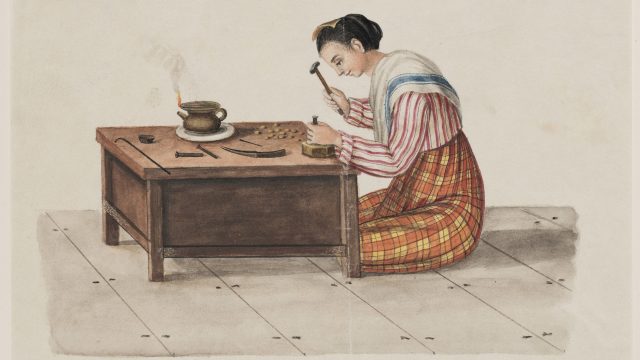
Very wonderful sharing, hope to make a cooperation. Please look at https://www.ziel-display.com/ to get more information.